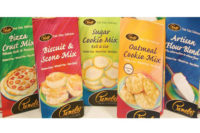
SensoryEffects Inclusions takes the road less traveled by introducing some newer technologies that can enhance products with fiber and deliver all-natural options.SF&WB’smanaging editor, Marina Mayer, talks with Dennis Reid, vice president, marketing and business development for the Defiance, Ohio-based ingredients provider, to discuss the latest in consumer trends and what its customers can expect for 2010.
Snack Food & Wholesale Bakery:How are bakers and snack producers incorporating inclusions into their new products? Please provide an example of new and/or the most popular applications.
Dennis Reid:Inclusions can be incorporated internally or externally (topically) and they can be added at various points in the manufacturing process depending on the desired finished product effect. With cereal-based inclusions, these help form the overall structure and body of a variety of products including snack clusters, nutritional bars and even grain mix-ins for yogurts.
SensoryEffects is the market leader in fat-based inclusion technology, so these functional inclusions are designed with a specific melt point and release mechanism for the flavors, colors, aromatics and textural ingredients to be delivered to the food system.
Example: Our inclusions can be added to any baked good to create unique flavor combinations. Some of the most popular applications are cinnamon/raisin breads, flavored soft pretzels, waffles, muffins, frozen dough, cookies, cheesecakes, breadsticks, pizza crusts, etc.
SF&WB:What are the latest consumer trends and how do inclusions play a role in developing new products that drive sales?
Reid:
Flavor Variety – still the spice of life and consumers demand more and more flavor varieties. This is part of the reason for the continued trend of “in-and-out” type products tied to seasons, holidays, special events, etc. Inclusions are an easy way to add a new twist to an old favorite and they are easy and convenient new ingredients for companies to leverage for in-and-out promotions.
Customization – consumers like to feel that a product has been made specifically for them, and even sometimes by them. Having inclusions as separate mix-in components, consumer products that are set-up as kits and foodservice products that are able to be customized on site are easily available.
Dual Texture – consumers still like the idea of multiple textures and unique eating experiences. Adding an inclusion to the mix helps to deliver these dual texture effects.
SF&WB: What types of challenges do bakers and snack producers face when working with inclusions?
Reid:Effective Incorporation – making sure that the right type and size inclusion is selected, and that it is added into the product or process at the right time and in the right dosage to deliver the desired results.
SF&WB: What types of new ingredients do you have to offer?
Reid:SensoryEffects Inclusions is now working very closely with one of our recently acquired sister companies, US Foods, to offer a wide range of cereal-based inclusions.
Through an exclusive supply partnership with Green Planet Farms, we now offer the first all-natural (or organic), hexane-free soy protein crisps at various protein levels: 50, 60 and even 80%. Conventional soy crisps cannot be considered all natural due to the use of hexane (an industrial solvent) in the extraction and isolation of the soy protein. Green Planet Farms uses a patented water-based extraction that isolates the protein without the use of solvents or high heat processing.
Some of the newer technologies in the conventional fat-based offering are products enhanced with fiber (and/or no-sugar-added), Kosher meat-flavored products and products specifically designed to be Whole Foods acceptable.
SF&WB:How do bakers use inclusions to differentiate their branded products or add value to private label breads, rolls, bagels and other bread products?
Reid: Add new flavor varieties with improved flavor impact along with a better appearance.
Effectively deliver sensitive ingredients to a system; at SensoryEffects, cinnamon is our No. 1 selling product because our delivery system offers a delayed release of the cinnamon, thus avoiding the inhibition of yeast and issues that typically occur with added cinnamon.
SF&WB:What kinds of nutritional benefits do your inclusions provide?
Reid:As mentioned above under new product offerings, we do offer some varieties of the standard SensoryEffects Inclusions that have added fiber and/or no-sugar-added versions.
The cereal inclusions can be excellent sources of added fiber and whole grains, as well as protein-fortification in the case of the soy crisps. Some consumers also do feel that organic and natural ingredients in general help to deliver improved quality and nutrition as well.
SF&WB:How does your R&D center work when bakers and snack producers request products with inclusions? Please provide a background on your R&D process.
Reid: As with many functional and flavor-based ingredients, the best way to prove how your products work is to actually have people see and taste them in action. At SensoryEffects, we believe this and we have a full range of demonstration concepts that we use to effectively show our products. We also work very closely with our customers to help design new uses of our inclusions specific to their needs, from concept through commercialization.
Editor’s Note: This interview is a sub-set of the Ingredient Technology article on inclusions, which printed in our November issue. Go to www.snackandbakery.com and check out the article in digital edition format.

